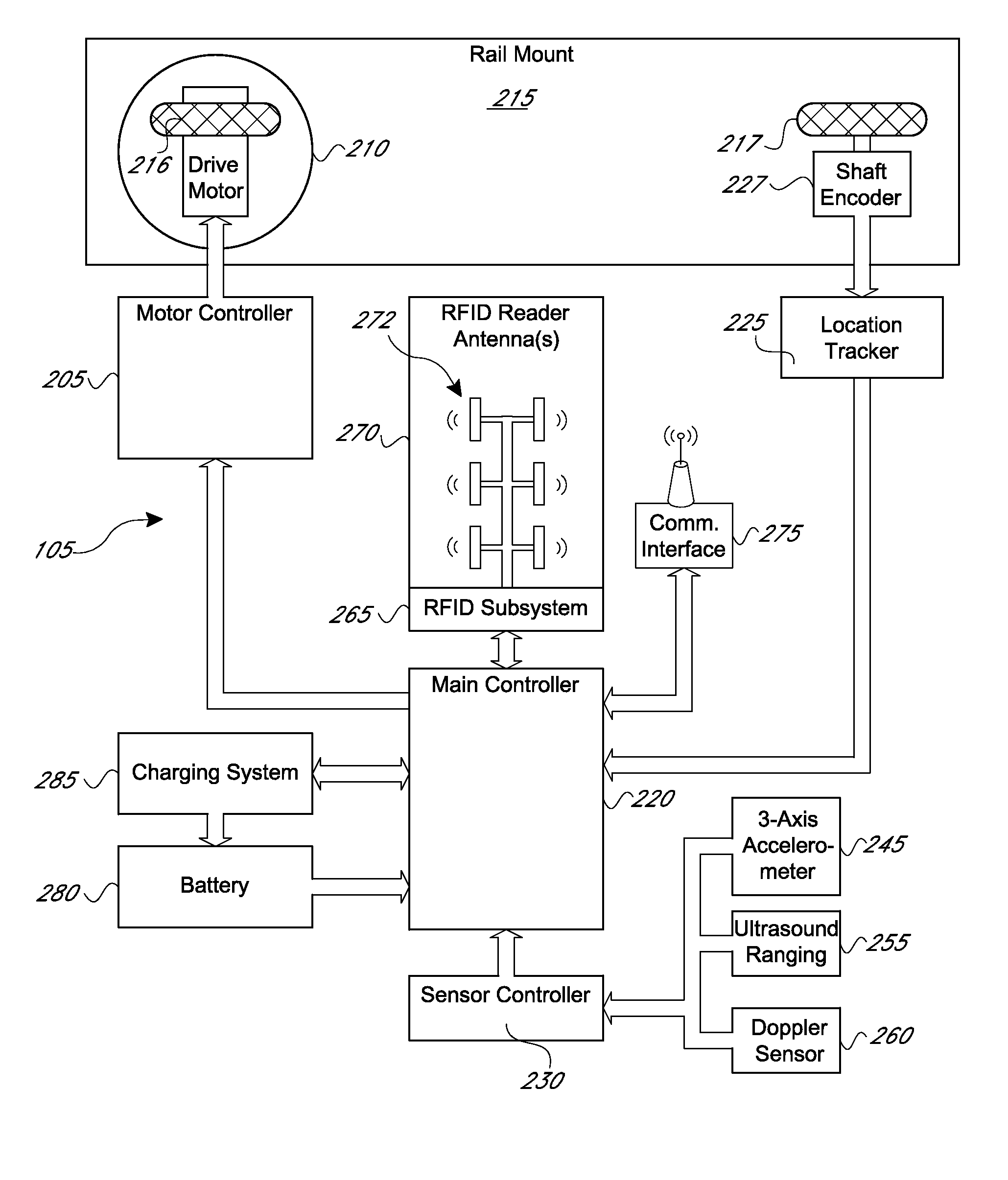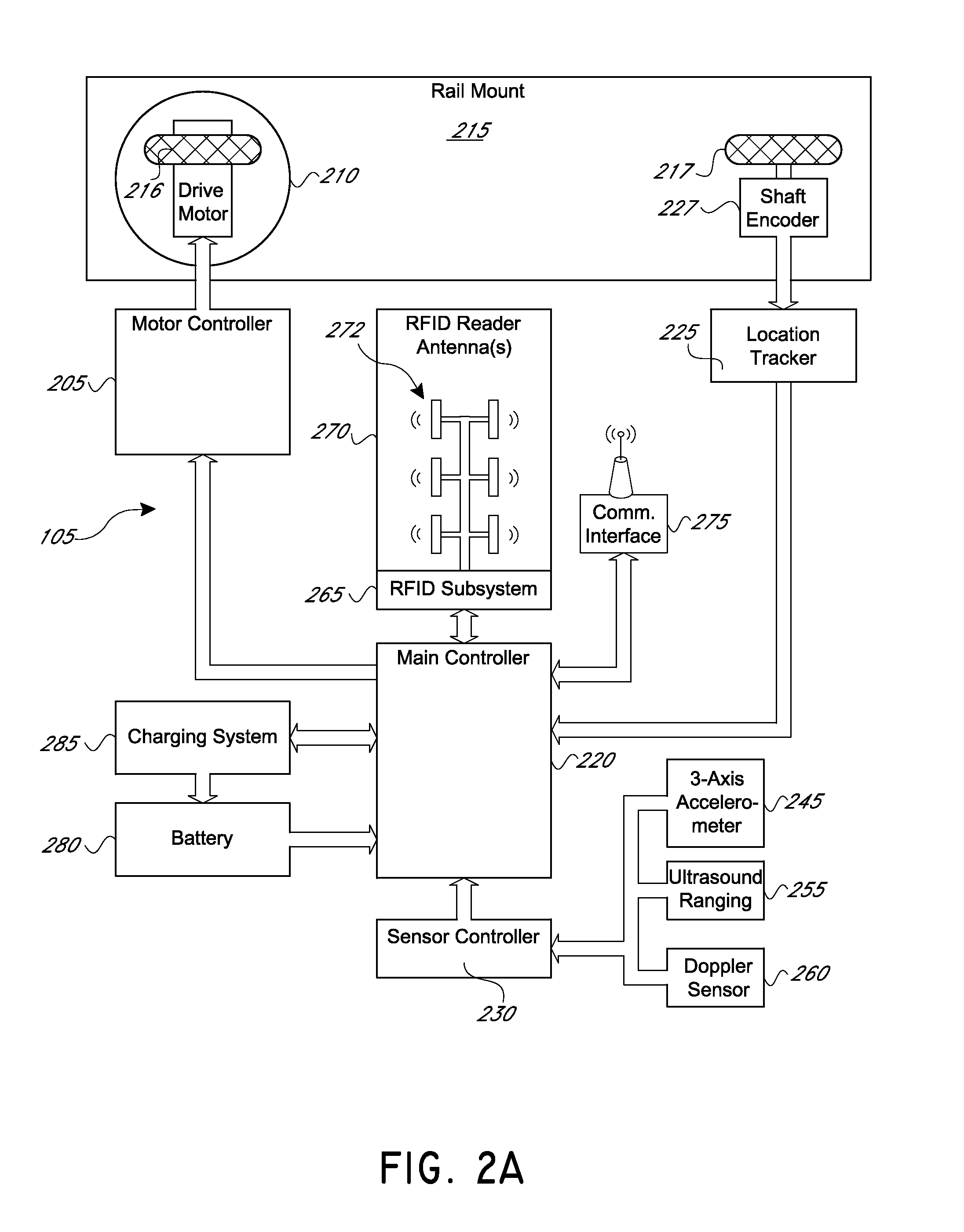Rail-mounted robotic inventory system
a robotic inventory and rail-mounted technology, applied in the field of inventary systems and methods for reading electronic tags, can solve the problems of rfid reader missing, difficulty is particularly intense, and the method of inventorying electronic tags has a margin of error, so as to avoid interference with equipment and/or humans, reduce the cost of running and maintaining the system, and scale relatively easily
- Summary
- Abstract
- Description
- Claims
- Application Information
AI Technical Summary
Benefits of technology
Problems solved by technology
Method used
Image
Examples
Embodiment Construction
[0031]Various aspects of the disclosure will now be described with regard to certain examples and embodiments, which are intended to illustrate but not to limit the disclosure. Nothing in this disclosure is intended to imply that any particular feature or characteristic of the disclosed embodiments is essential. The scope of protection of certain inventions is defined by the claims. For ease of reference, the description below uses the term “store” in discussing the rail-mounted robotic inventory / locating system. The term “store” can refer to any type of area where products are located, including but not limited to storage areas, warehouses, retailer facilities, etc.
Examples of Rail-Mounted Robotic Inventory / Locating Systems
[0032]FIG. 1 is a block diagram of a rail-mounted robotic inventory and localizing system 100 for inventorying and / or locating items in a store (e.g., department store, grocery store, etc.), warehouse, or other storage area. The system 100 can include a rail-moun...
PUM
 Login to View More
Login to View More Abstract
Description
Claims
Application Information
 Login to View More
Login to View More - R&D
- Intellectual Property
- Life Sciences
- Materials
- Tech Scout
- Unparalleled Data Quality
- Higher Quality Content
- 60% Fewer Hallucinations
Browse by: Latest US Patents, China's latest patents, Technical Efficacy Thesaurus, Application Domain, Technology Topic, Popular Technical Reports.
© 2025 PatSnap. All rights reserved.Legal|Privacy policy|Modern Slavery Act Transparency Statement|Sitemap|About US| Contact US: help@patsnap.com



